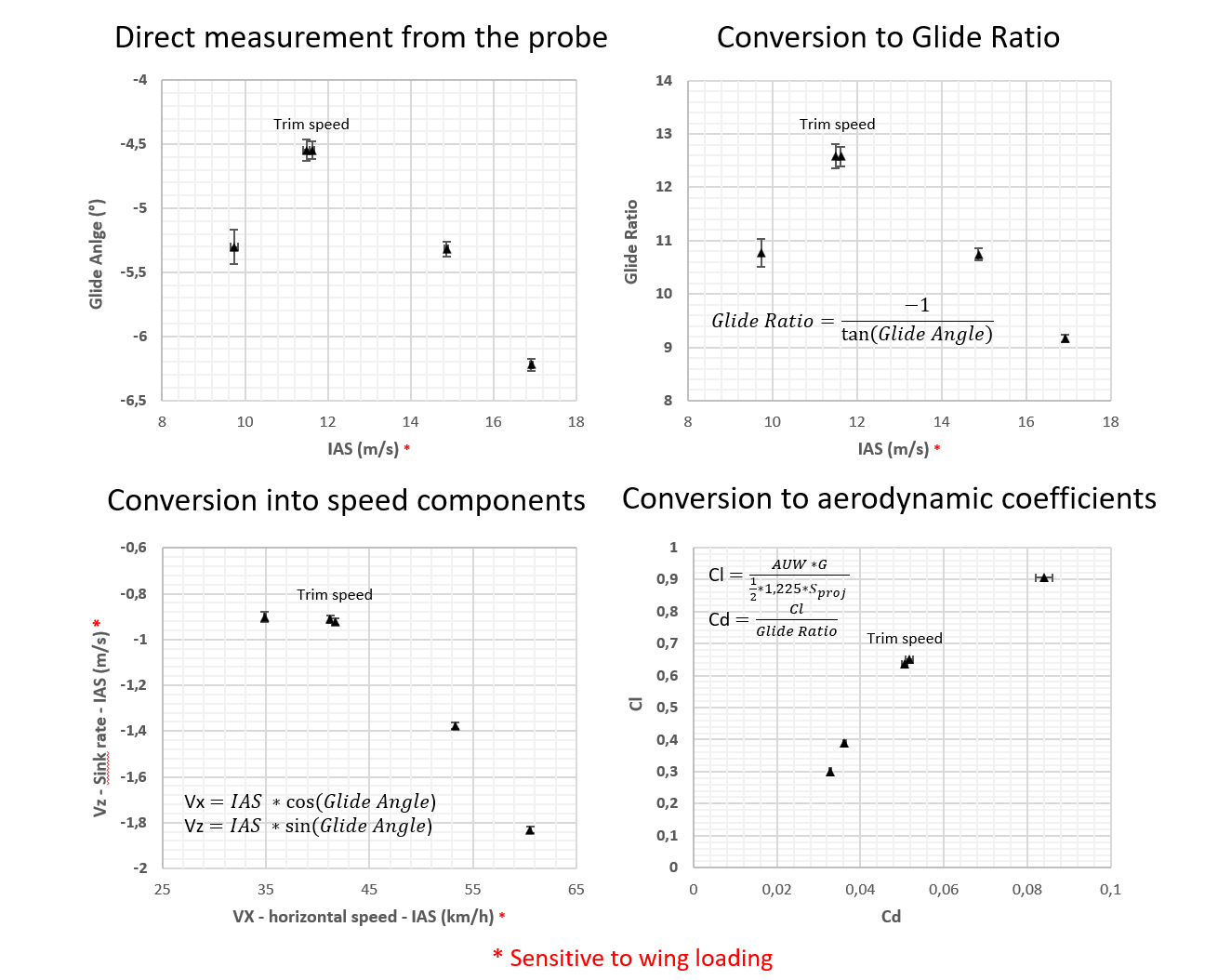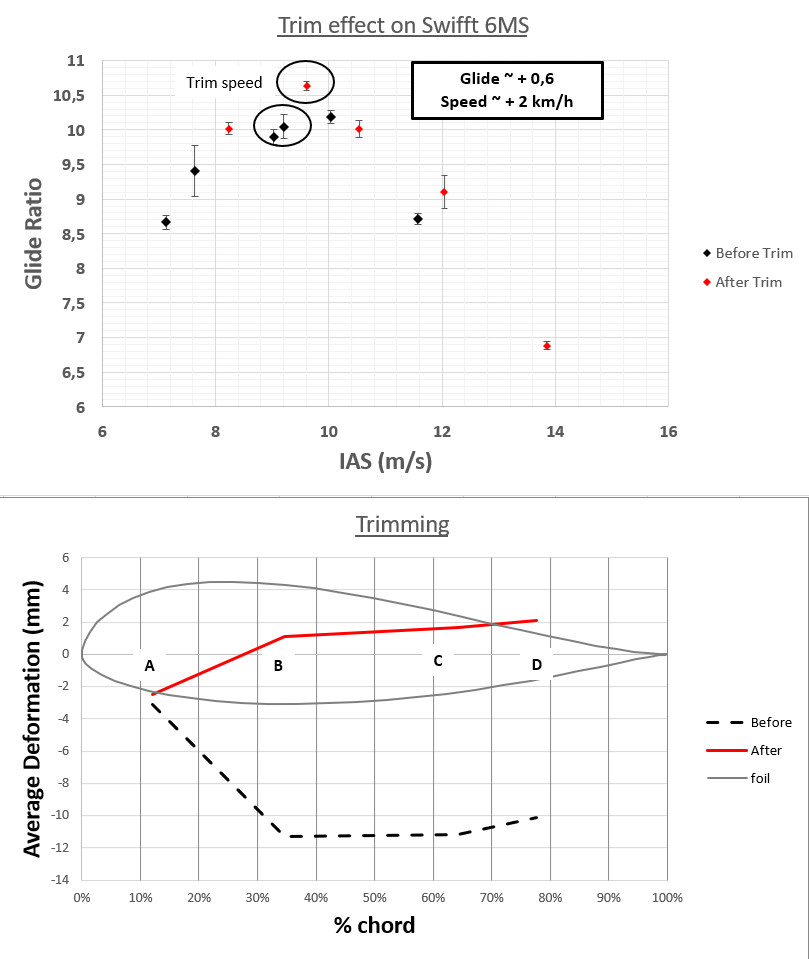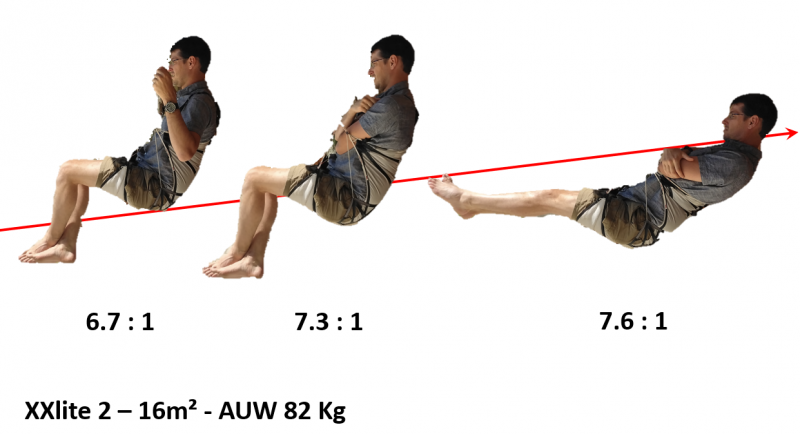Example of measurement
The performance measurement of a paraglider is a challenging task because of the pilot that represents an important part of the overall drag. There is therefore one polar per « wing/pilot/harness » set. If you want to compare different wings, it is then necessary to keep the same pilot equipped with the same harness. But these precautions are often not sufficient because of the adjustment of the harness as well as the general posture that play an important role too.
Side by side comparisons of two similar wings but with different pilots therefore may have no validity since the differences between the pilots can be an order of magnitude greater than the differences between the wings.
This web page presents some measurements made with the probe which allows to quantify few effects.
What’s the polar ?
What’s the polar and how to read it ?

The polar of an aircraft is its aerodynamic characteristic. It provides the relation between lift and drag. These are generally presented in the form of aerodynamic coefficients: Cl for the lift and Cd for drag. The performance is given by the glide ratio defined as Cl/Cd. The higher the ratio, the more efficient the aircraft.
Using the flight speed and the geometric characteristics of the glider, these coefficients can be converted into speed which are more useful for the pilot.
- Vx = for the horizontal speed
- Vz = for the sink rate
- Glide ratio = Vx/Vz
However, these speeds depend on atmospheric conditions (air density) and wing loading. To get rid of the atmospheric conditions, a standard atmosphere having a density of 1.225 kg/m3 is used. This corresponds to the so-called Indicated Air Speed (IAS). The True Air Speed (TAS) can be computed by using the actual air density, which depends on altitude, pressure and temperature.
By definition, the glide ratio is not affected by atmospheric conditions nor wing loading (this does not mean that a wing is unaffected by wing loading).
The Vector probe makes a direct measurement of the glide angle as well as the total air speed. For unpowered aircraft in stabilized condition, the glide ratio is directly linked to the glide ratio.
The usual way of plotting the results of the probe is therefore the glide angle as a function of the IAS speed.
It is then possible to calculate and plot the IAS speeds Vx and Vz by trigonometry. However, if we want to use this plot to compare two wings, it is necessary to have a similar wing loading. If this is not the case, it is preferable to use the previous plot where only the speed depends on the wing loading. It is also possible to go back to the aerodynamic coefficients for a fairer comparison.
Range of paraglider performance
The two plots give an overview of paraglider performance. Each measurement was not made with the same pilot/harness pair, so they are not directly comparable. However, we can observe that :
- Glide ratios range from around 7 for a small mountain wing with an ordinary harness, up to around 13 for a competition wing with a well-profiled harness. The aspect-ratio is the dominant factor for performance.
- The maximum glide-ratio is always at trim speed.
- When moving up in category, the trim-speed increases slightly, in accordance with the increase in wing loading.
- An ENB with a good pod harness can be as good as an ENC with an aerodynamically bad harness (can be an open harness or a pod poorly adjusted).
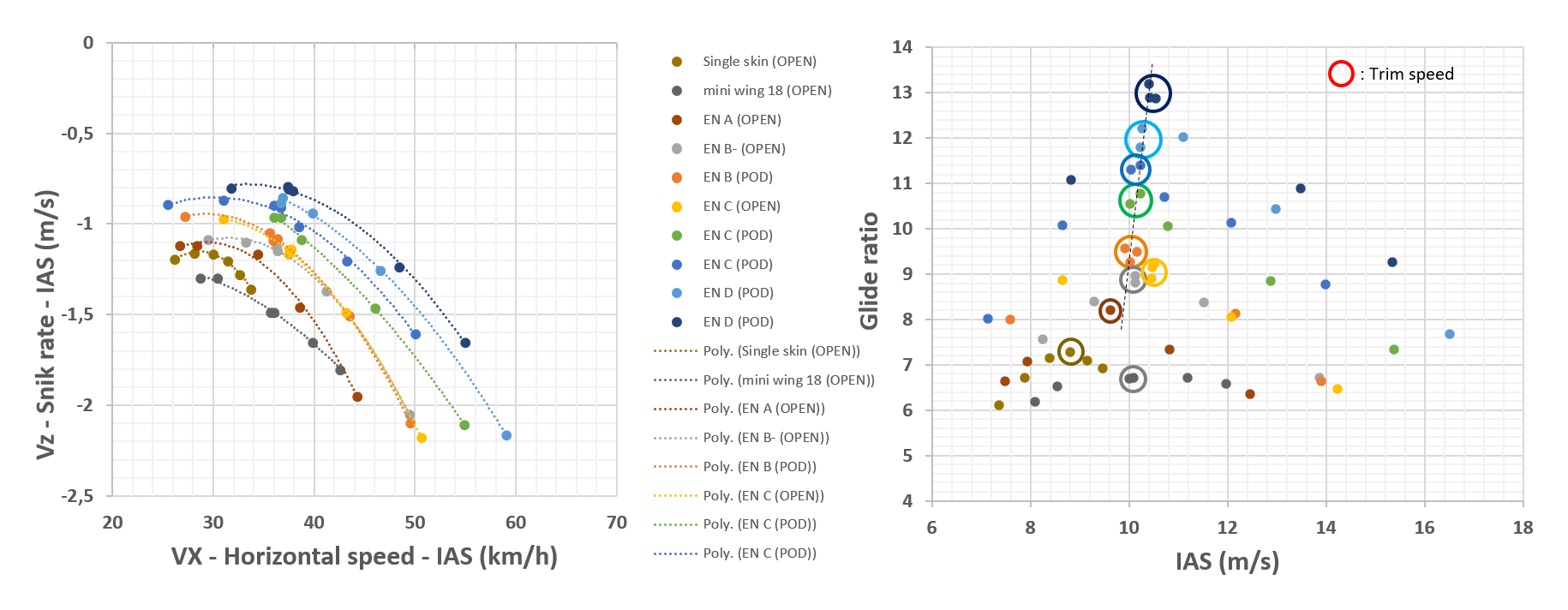
Arms positioning effect
The arms participate significantly in the pilot’s drag because of a high drag coefficient.
The following example shows the effect on a END wing. There is a gain of about 1 point on glide ratio for all flight regimes. This corresponds to a difference of around 0.005 in Cd, or 0.1 in SCd
It can be seen that the gain on the drag coefficient is slightly lower at high speeds, whereas it should be globally constant over the entire speed range. This is probably due to a change in the balance of the harness, which (negatively) modifies the overall drag. This type of competition harness is very sensitive to the angle of attack.

Winglet
During the first tests of the probe, a winglet effect was achieved on an Alpha 6. The winglet was neutralized by rolling it up.
There is little effect. Perhaps a slight improvement at low speed and probably a slight deterioration at high speed.
It’s on this type of wing with low aspect ratio that we expect the greatest improvement at low speed.
The conclusion is that wiglets are neutral for performance on this type of wing. They are, however, useful for wing stability.
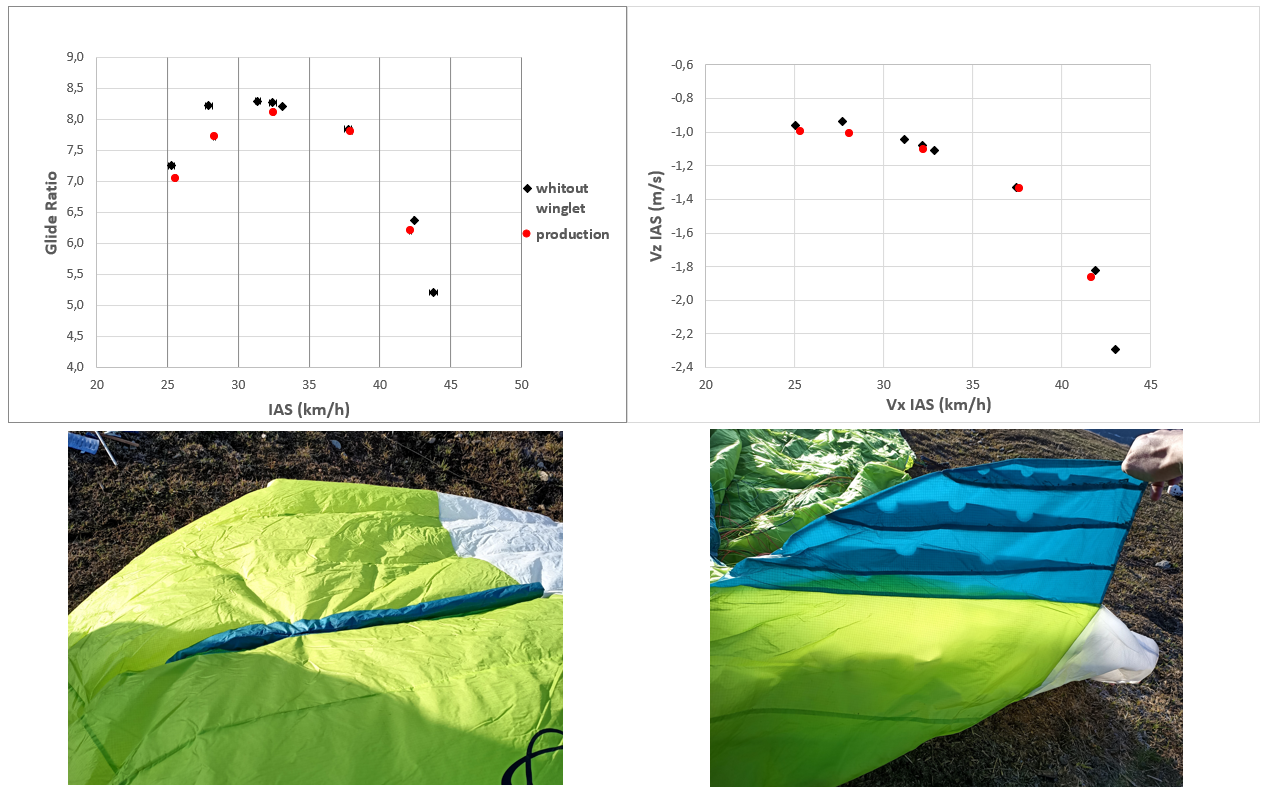
wing flapping
Does wing flapping like bird in a thermal improve the glide ratio?
The answer is no, as you can see below.
To a first approximation, the reason is that during flapping, the wing AoA moves around the « steady » polar and the result is simply the average. It would appear that there is no favorable dynamic effect.
Please note that during this flapping, the wing does not approach the stall, as can sometimes be done to severely degrade glide ratio.
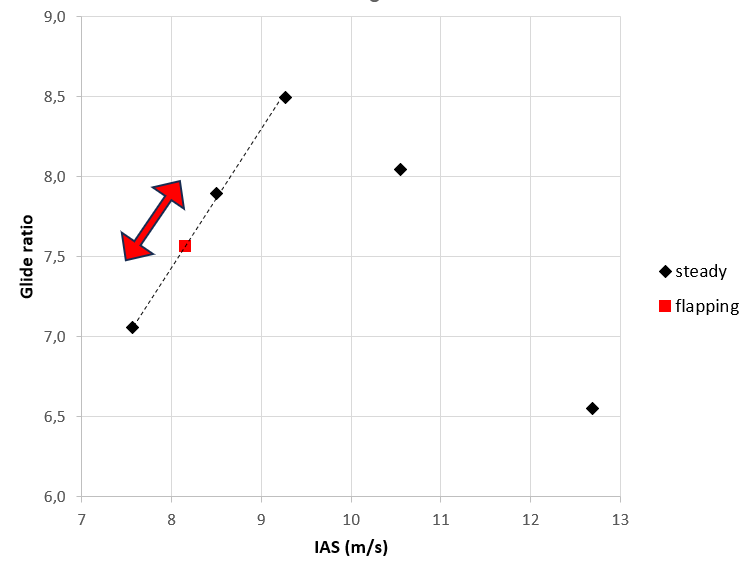
Skis
Unsurprisingly, when you’ve got skis on your feet, glide ratio deteriorates.
In the example below, you lose about 0.6 pt of glide on a B wing. This depends on your skis, but also on your flying position. We can see that the most favorable position is to put the skis as vertical as possible. The reason is that, despite the increase in ski drag, most of the pilot is in the wake.
Another good (but uncomfortable) option is to set the skis at 90° with low incidence (a bit like a wing). The loss is then more than 0.3 pt.

Trimming
Here’s a measurement of my wing’s polar, before and after trimming.
The wing is about 20h old, so it’s normal to have some deviations.
However, the effect of 10mm difference is quite significant.
Posture influence
It is well known that posture influences the glide ratio.
Here’s the effect of a few positions on the xxlite2.
